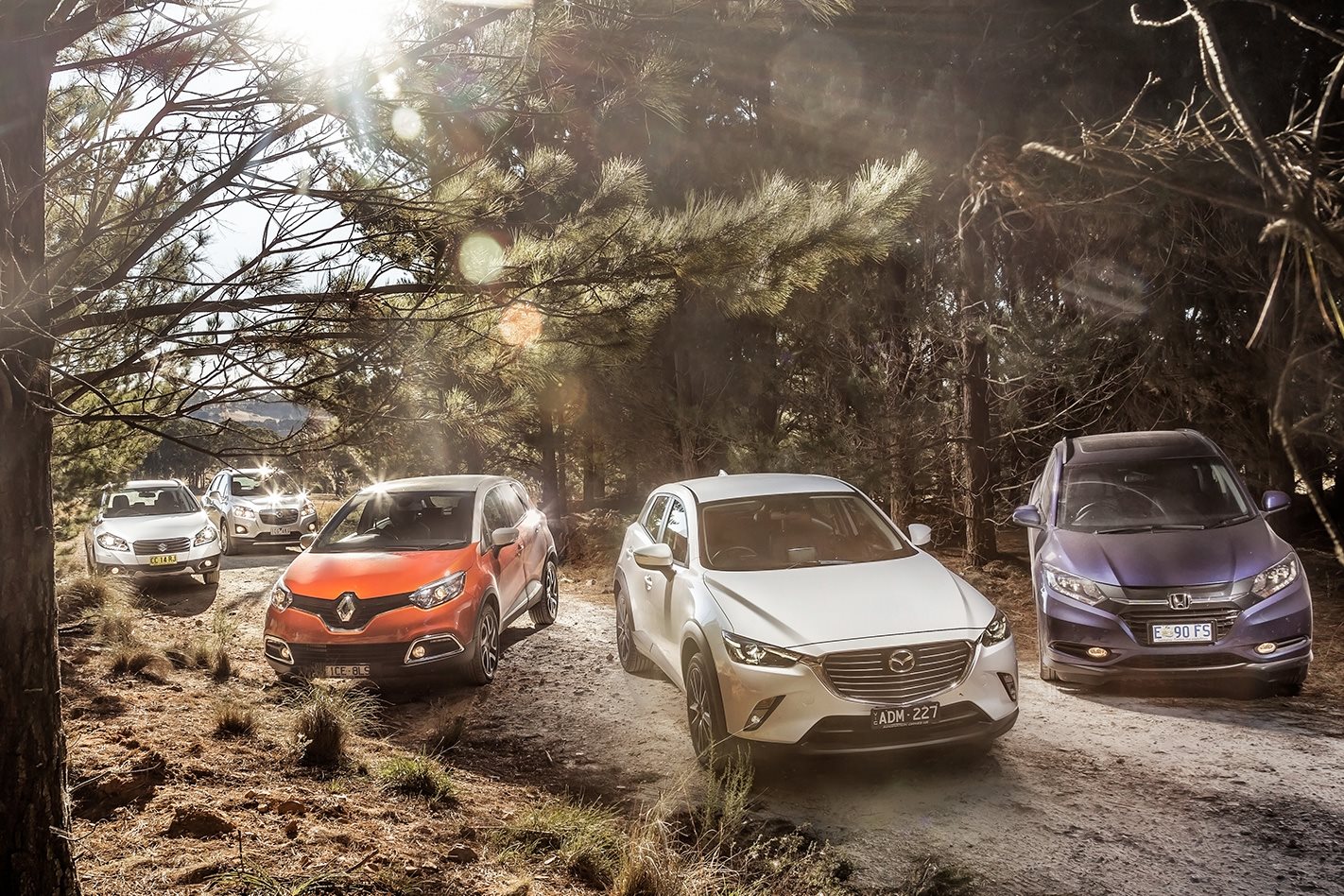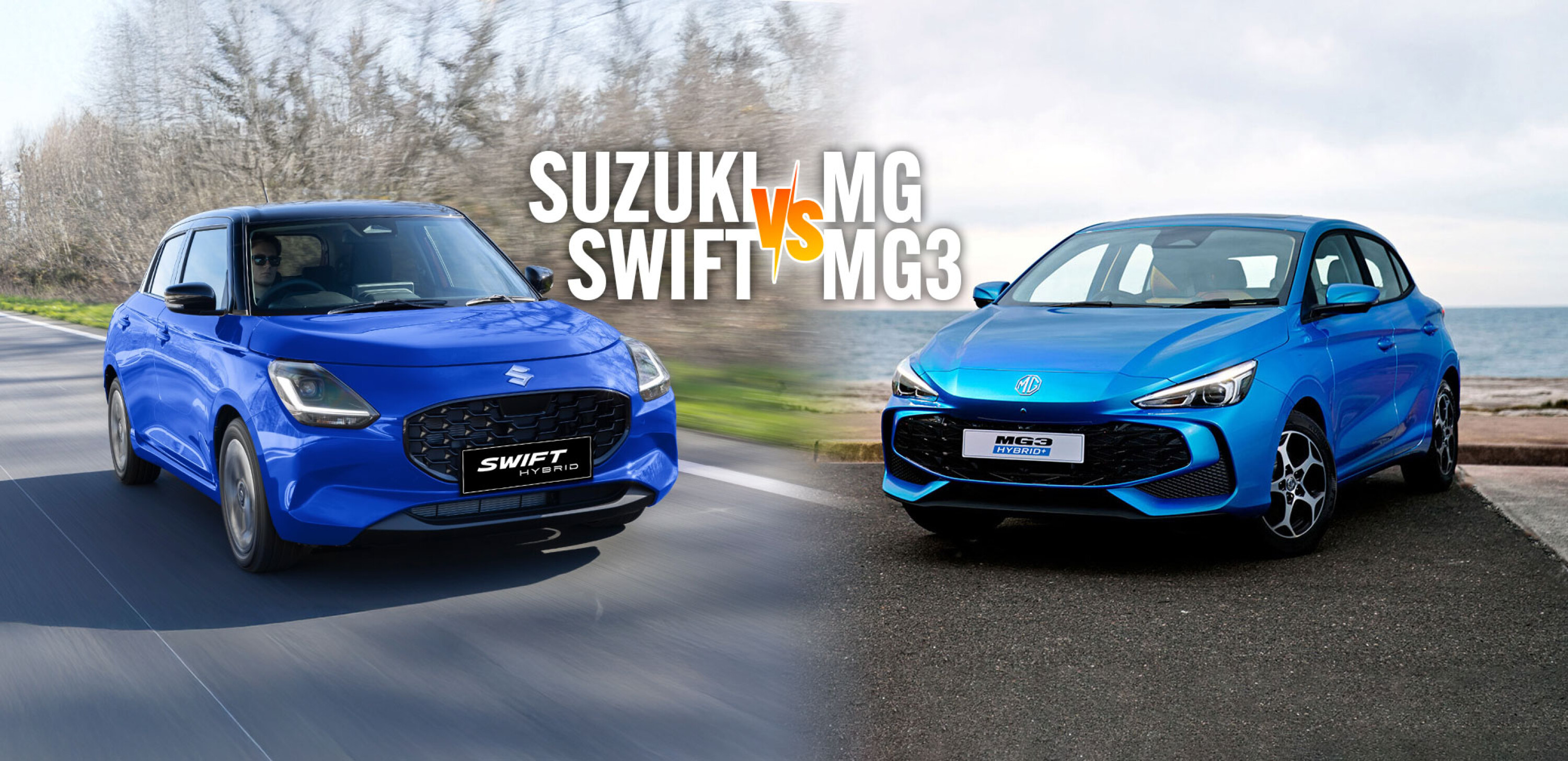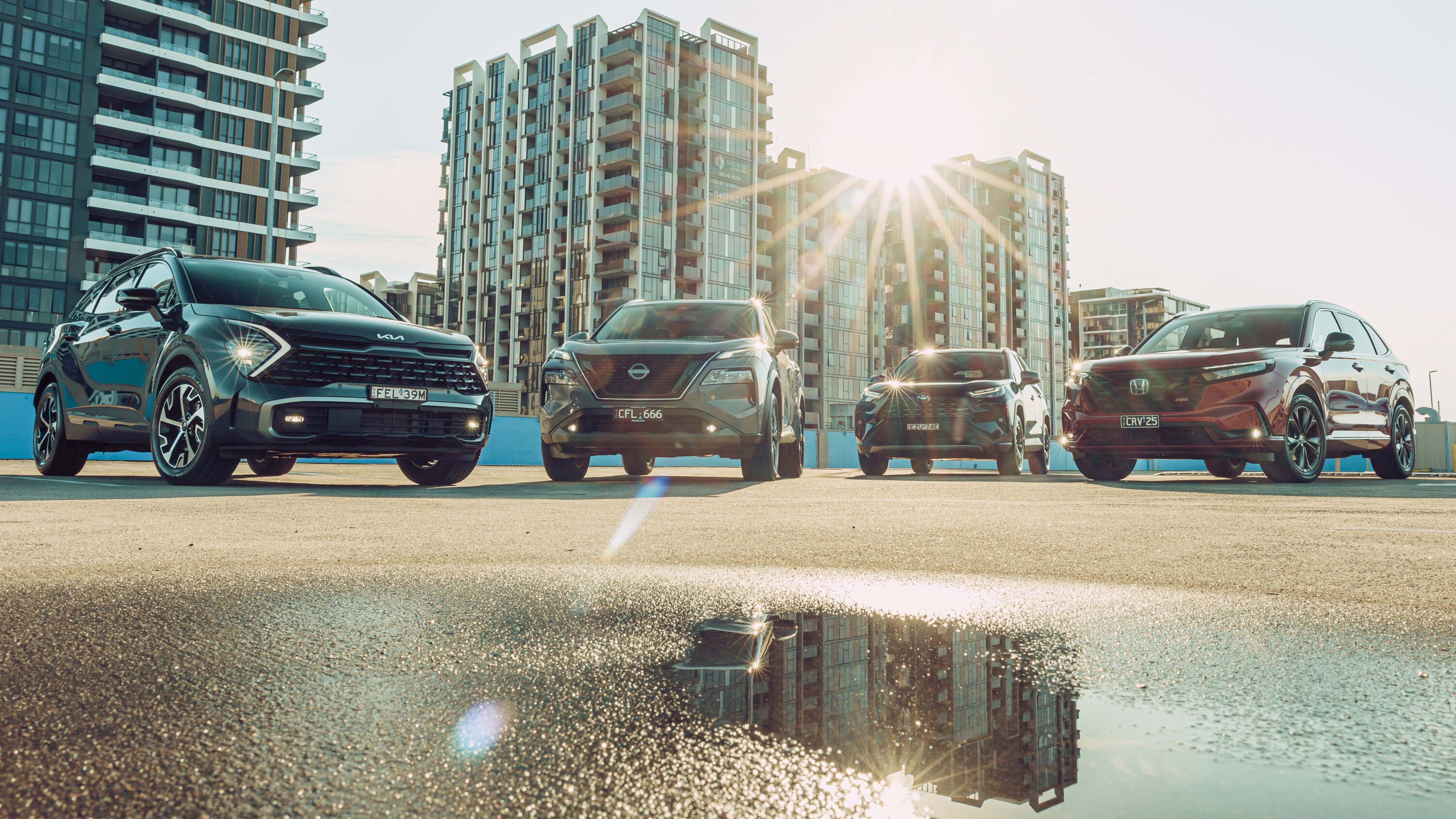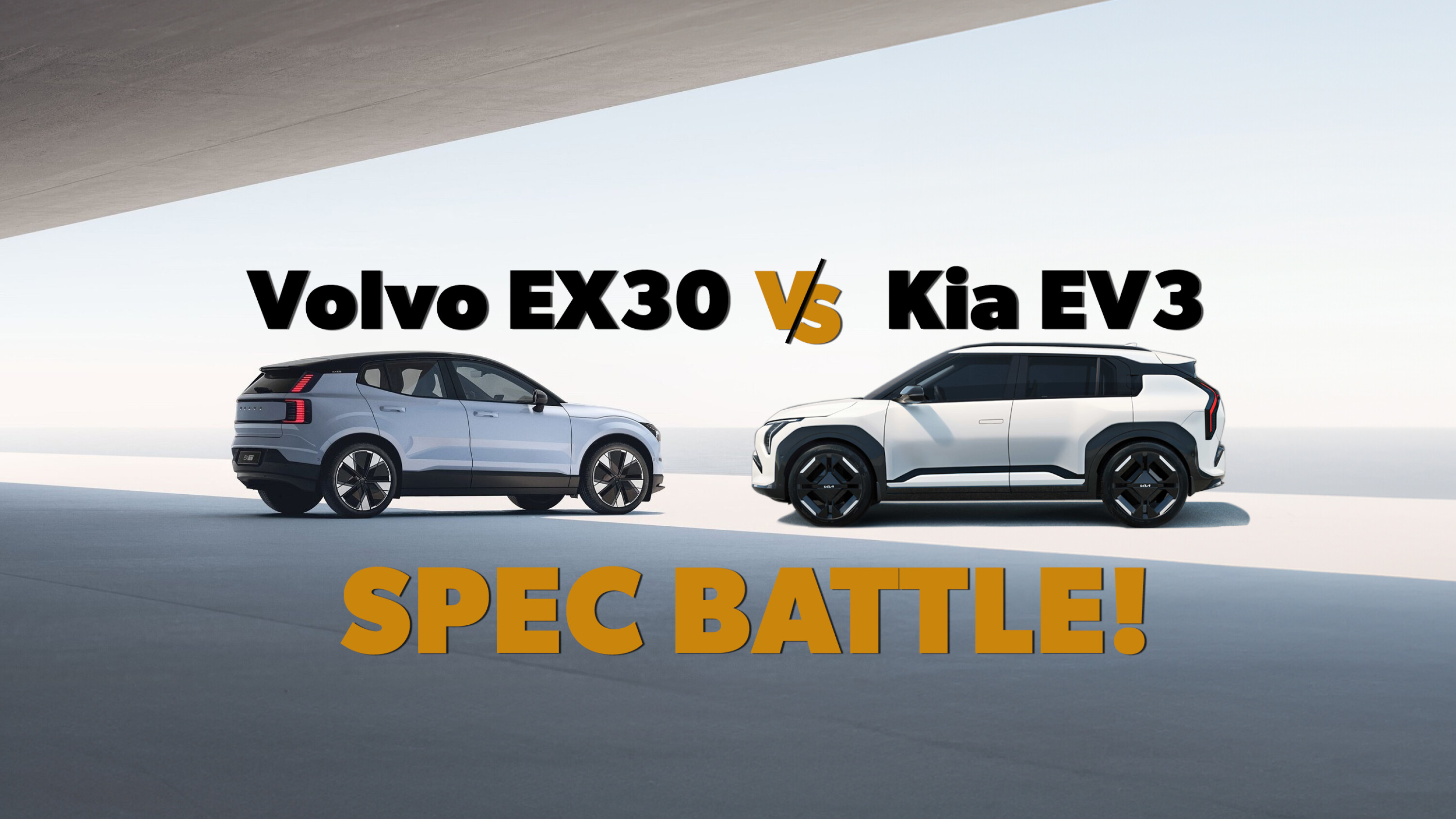Boom, boom, boom goes the baby SUV as Renault, Mazda and Honda throw sexy new metal into this fast-growing segment.
First published in the May 2015 issue of Wheels magazine, Australia’s most experienced and most trusted car magazine since 1953.
Can’t wait to see the final scores? Jump to the verdict now.
EVER noticed how perceptions of size change over time? Suitably spacious and tasteful homes of the 1950s are often deemed unworkable shoeboxes in this era of the McMansion, seeing they need to accommodate super-sized kids that tower over their bread-and-dripping ancestors, plus all the ‘stuff’ people need these days. But what about the machines filling their multi-car vehicle holes?
That’s where the rather clever small SUV steps in. In architecture terms, it’s a modernist slice of neat space utilisation versus the McMansion-esque slab of excess that is many medium to large SUVs. Born in the back alleys of Europe, yet honed by the Japanese, the baby SUV has become the little darling of 2014/15.
‘Fashion-forward’ is a rare phenomenon in the automotive world, but if the newest contenders in the baby SUV brigade are anything to go by, being cool doesn’t mean you have to act dumb.
Five kinds of cool
Renault’s Clio-based Captur is a striking example of small SUV sculpture, especially the test Dynamique with its metallic orange and cream two-tone paint playing up deeply scalloped flanks and its pert, Euro-chic rear end. Yet beneath all that Champs-Elysees glitz hides an incredibly well thought-out package.
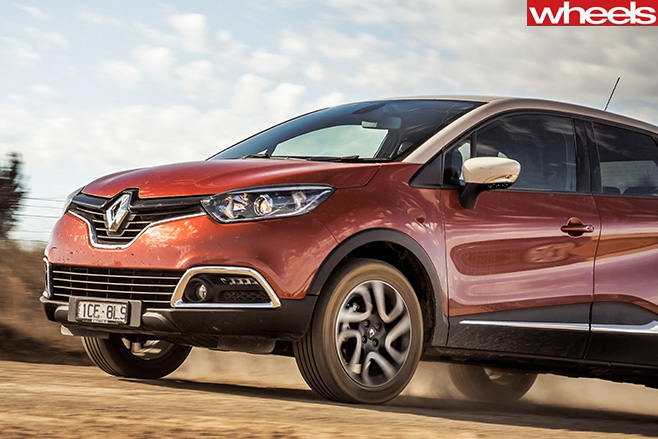
By building up instead of out, and fitting a neat rear bench that slides fore-aft through 160mm, Captur’s cabin is far more accommodating than a Clio’s. Ample leg and head room, 1.5-litre bottle holders in the front doors (though only 600ml slots in the rear) and a removable bin between the front seats that looks like it could double as a container for crook kids headline the Renault’s utility.
Captur’s removable, washable seat covers must be like the second coming for clean freaks, and likewise its Tardis-like boot for anyone into carrying stuff. Depending on the rear-seat position, it can vary between 377 and 455 litres in size, and has a removable floor that is rubberised on one side, and can be used as a partition to stop stuff sliding about.
Similarly arresting in style, yet arguably even more of a head-turner than the Captur is Mazda’s CX-3. Sired by the Mazda 2 but sharing the 3’s 2.0-litre petrol engine, the CX-3’s cab-rearward shape was clearly prioritised by Hiroshima’s fashionistas. Walk around the multi-surfaced Mazda and its shape constantly changes – making it difficult to convey on camera – yet it has a visual identity that almost makes it classless.
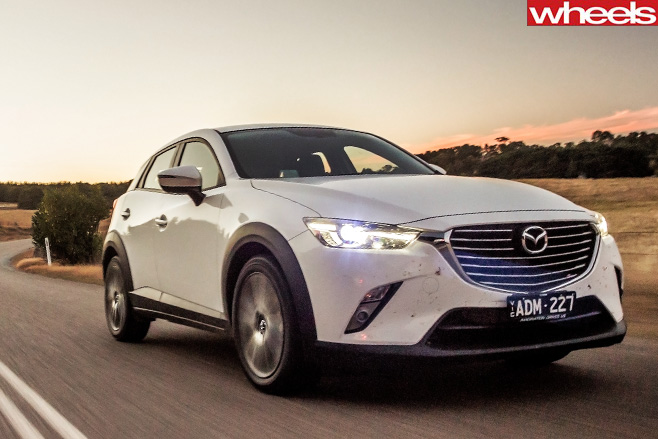
While clearly space-deprived compared to its expansive rivals, the CX-3’s plush rear seat is entirely liveable, though it’s the front-seat package that has received the most attention. The CX-3’s 264-litre boot is unable to fit even the smallest Mountain Buggy pram (what happened to good old strollers?), necessitating a folded backrest, and while there’s quite a bit of depth beneath its removable false floor, CX-3’s loading lip is high and its divider isn’t as useful as the Renault’s.
Given some of Honda’s recent efforts, like the malformed Jazz/City and the dorky Civic, it’s quite a surprise to feel drawn to an H-badged design, espcially an SUV. But the new-generation HR-V is that car.
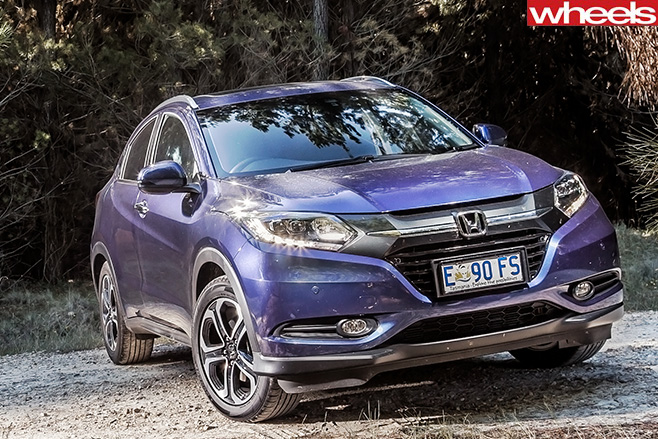
The HR-V continues its revival of Honda’s fortunes inside. A beautifully rendered dashboard with the finest plastics quality, acres of space and a commanding rear seat package with a fabulous view forward raise the Honda to a level its rivals can’t match. Likewise its vast boot with ‘magic seat’ flexibility that is both breathtakingly simple, yet supremely effective in using the rear-seat folding mechanism to maximum effect.
Yet the HR-V is a bit hit-and-miss. Its tailgate is heavy, its doors won’t take bottles any larger than 750ml, its front seats have short, flat cushions and inadequate adjustment, and its flimsy, mesh-like faux parcel shelf is a tragedy. Exactly why it’s so rubbish we can’t say, but you should at least be able to twist it and fold it away. Or pour kero on it and burn it.
From left field in this five-star crew comes Suzuki’s underrated S-Cross. This replacement for the ageing SX4 has been with us for just over a year, yet it has hardly set the market ablaze. And part of the reason for that could be its relative normality. Unlike the slinky CX-3, coupe-like HR-V, catwalk-ready Captur or Holden’s tall-boy Trax, the S-Cross is simply a small mini-wagon, just like Peugeot’s 2008 but without that car’s visual flair.
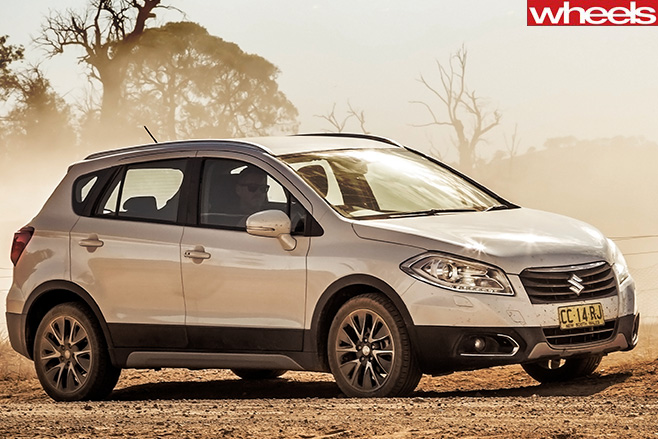
But – and it’s a big one – the S-Cross GLX tested here costs $30,465 driveaway, and that’s a sizeable wedge for what feels like an XL Swift inside. The S-Cross might be roomy, but its interior pales in comparison to the HR-V’s luxury, or the CX-3’s character, or the Captur’s colour. Given that so many parts are shared with its light-hatch sister, it’s no wonder the S-Cross struggles to escape its upbringing.
Likewise the Trax. It’s almost two years since Holden’s Barina-based small SUV launched here, and it’s done quite well. But the Trax must’ve spent too much time sunbaking on the Gold Coast because some wrinkles are starting to appear.
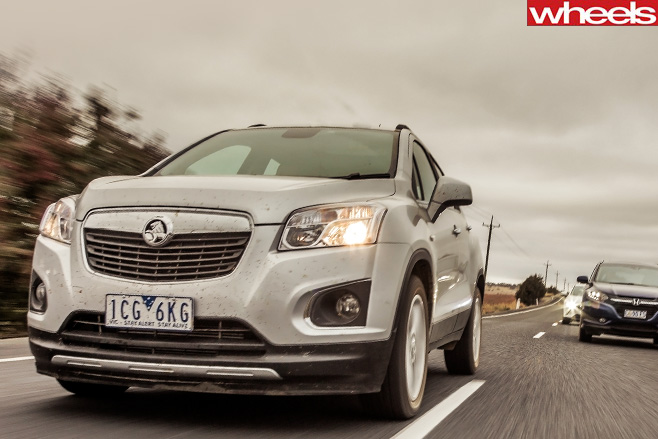
Inside, the cost-cutting scalpel is all too evident. While the Trax’s cabin is littered with useful storage compartments – some with rubberised mats – and cupholders aplenty (four in the centre console, two in the rear armrest, plus decent bottle holders in the doors), it’s the execution of its interior design that lets the side down.
Unlike the S-Cross and CX-3’s hard cabin plastics, the Trax’s are horribly scratch-prone, like pretty much every other sub-Commodore GM product since the 90s. And the sticky, cloying feel of its ‘Sportec’ vinyl trim is barely mitigated by the push-button air-con’s effectiveness – the sole non-climate-control system here. It’s a shame, really, because Trax packs plenty into its compact shape, including decent seats and a well-shaped boot with a double-fold rear seat that forms a fully flat floor.
Cruising corners on stilts
Where the Lang Lang-tuned Holden fights back big time is in the dynamic department. Riding on excellent 215/55R18 Continentals, the Trax’s chassis is taut and sweetly balanced, with inch-perfect steering precision and a newfound level of throttle adjustability thanks to the extra torque of its chubby turbo four.
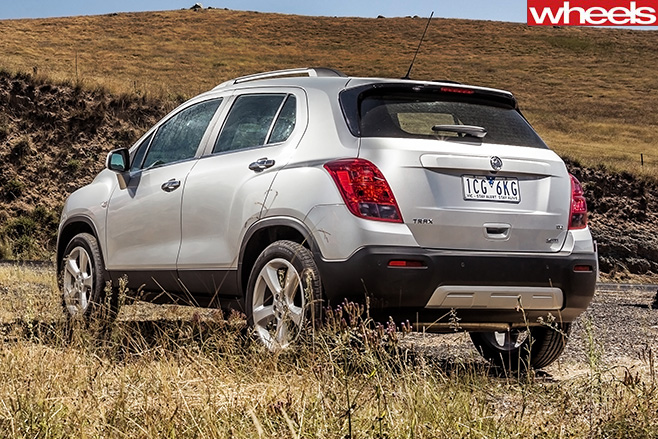
Similarly sporty but not quite as polished is the CX-3. It also has turn-in, balance and grip by the bucketload, though it feels a bit skittish over bumps at times and its steering suffers kickback through lumpy corners. Then there’s the matter of its damping, which doesn’t quite feel in unison front-to-rear, though four-up ride quality is excellent, offering arguably the best combination of comfort and control.
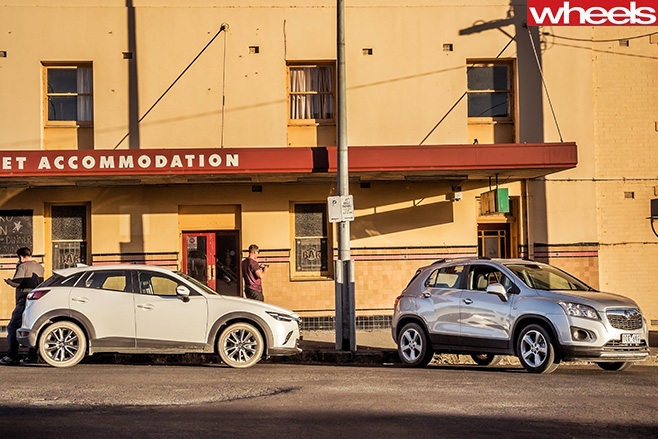
Refreshingly, the Captur feels very French at speed. The faster you go, the better its ride gets, absorbing bumps that upset the unladen Mazda, yet around town, the 17in-wheeled Captur Dynamique can feel quite firm. And quiet.
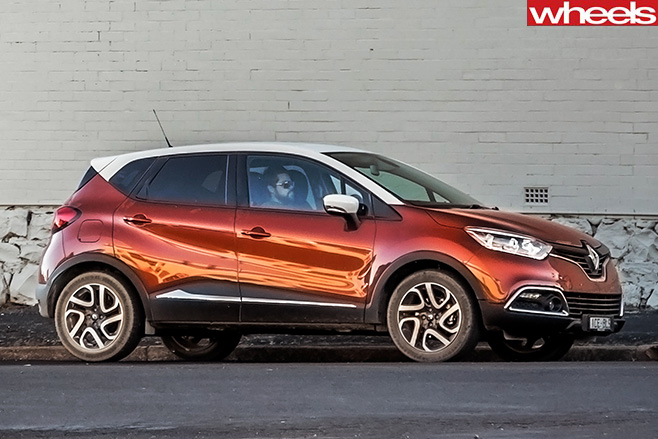
Given the depressingly low dynamic base of its showroom buddies, it’s a surprise to discover the HR-V is decent to drive. While its steering can feel disconnected and anaesthetised unless loaded up, the HR-V lacks the vagueness that blights the CR-V and Accord. Despite some roll in the front end, there’s a keenness you can coax from it that dispatches winding roads quickly, and quite confidently. But, unlike its better rivals, you have to set the HR-V’s chassis up for corners. Drive it badly and its handling becomes slovenly.
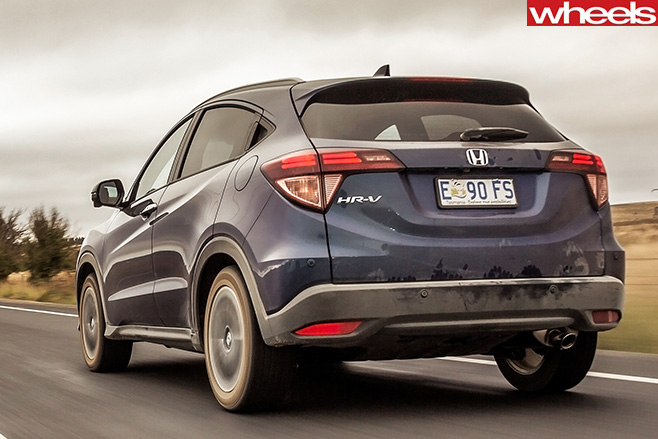
Unexpectedly, the S-Cross is the dynamic duffer in this company. In isolation, when driven briskly the S-Cross feels like it’s blessed with Swift DNA, thanks to the suspension’s underlying suppleness and the adjustable nature of its rear end. But the more you ask of it, the worse it gets.
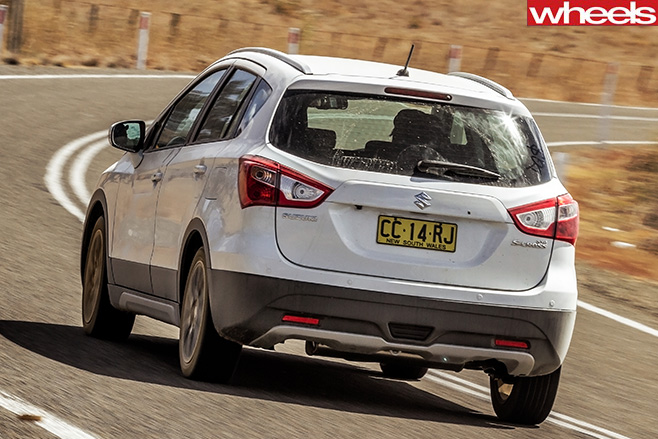
Flexing those baby muscles
Also lacking in driveability polish is the Suzuki’s CVT. The transmission lacks smoothness when accelerating from rest, and gives the impression that the drive belt is slipping occasionally under full-throttle acceleration.
Yet there’s plenty of goodness. At decent speeds, Suzuki’s seemingly undernourished 86kW/158Nm 1.6-litre atmo four is smooth and unobtrusive when whisking the lithe 1125kg body along, though its quietness may have something to do with being drowned out by road noise. Then there’s the HR-V-beating acceleration to 60km/h, and its excellent test fuel consumption of just 9.0L/100km.
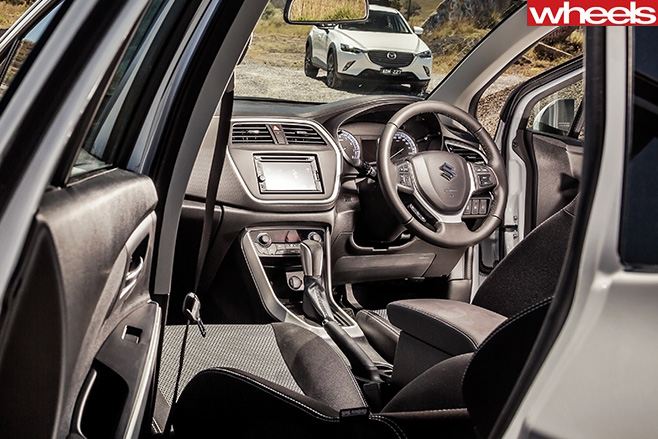
Renault’s 1.2 turbo is an admirably smooth and low-stressed engine, and doesn’t need revs to perform. In Drive, the six-speed dual-clutch ’box upshifts from first to second gear just under 5000rpm, and at 5400rpm thereafter, yet it’ll hit 6000rpm if you put it in the manual gate… and go slower. What spoils the fun, though, is the transmission’s lethargy. From standstill, Renault’s Getrag-developed dual-clutcher takes too long to engage, while at other times its throttle response has the immediacy of a cadaver. Captur’s plump mid-range is some compensation, though you often drive it flat to the floor.
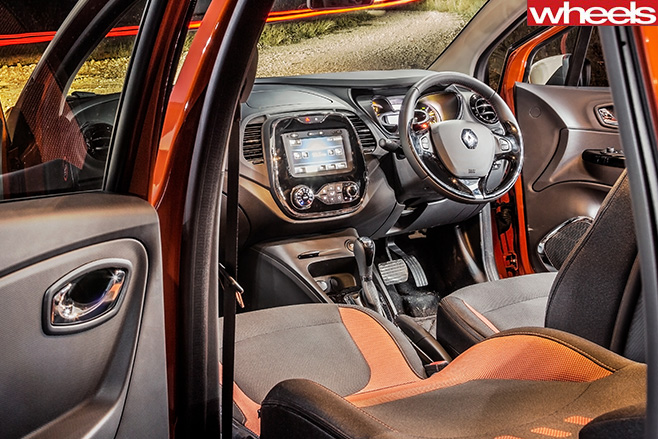
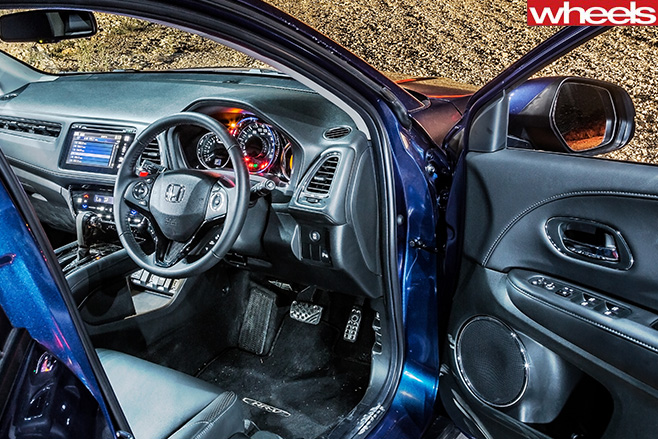
The 1226kg Mazda is not only more economical (9.3L/100km), but much quicker. A 0-100km/h time of 8.9sec and the standing 400m in 16.4 cement the CX-3’s sporting credentials, as does its excellent transmission with highly effective Sport mode. But the downside to the engine’s induction growl is the vibes you feel through the wheel and pedals as it spins the tacho needle all the way to 6700rpm.
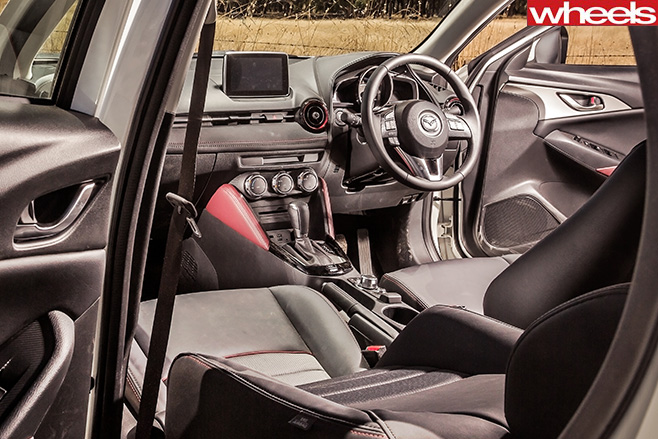
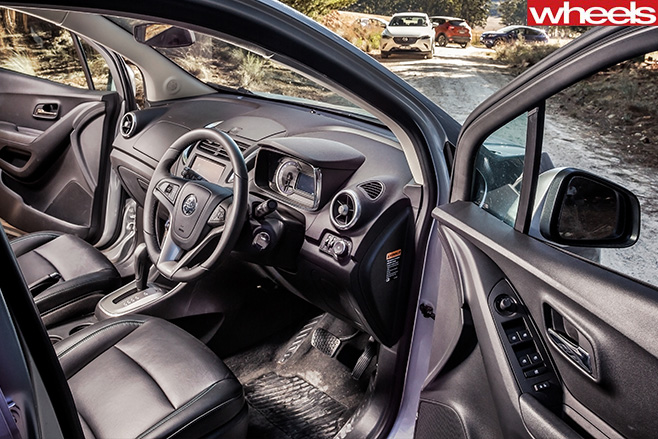
So which were our favourites?
But the Trax is a better car than the S-Cross, and arguably better value at an inflated $30K. While its plasticky interior, vinyl trim and equipment shortfalls put a big question mark next to its list price, no one can dispute the excellence of its handling, or its grunt and space.
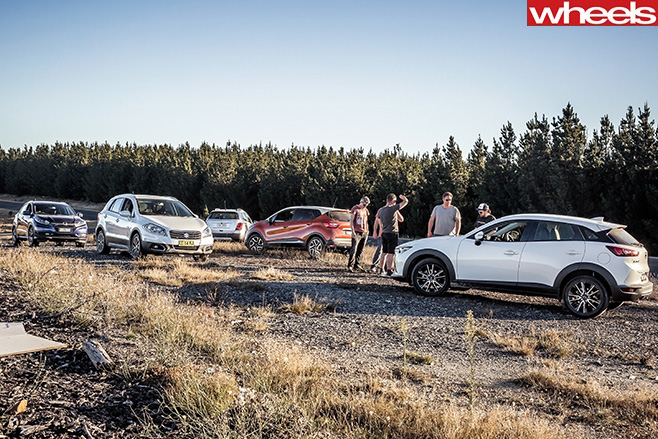
Unfortunately for the Suzuki, there’s no way its interior feels like 30 grand’s worth, certainly not after experiencing the sizzle of its best rivals for less money. But there’s an unpretentious charm about the S-Cross. While it isn’t perfect, we could understand why someone would buy one, keep it for a fault-free 15 years and love it. But that person would probably be buying the GL manual for $22,990 driveaway, not the overpriced and out-of-its-depth GLX.
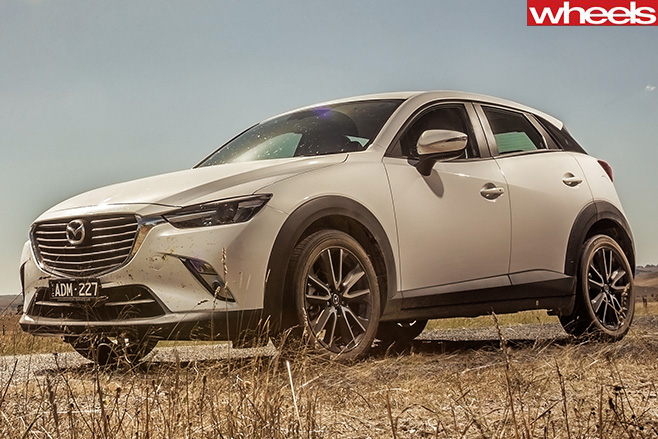
So, CX-3 or HR-V? Hate to say it, but it depends on your priorities because they’re so different. If the Honda offered the Mazda’s seats and dynamics, it would win because it’s such a versatile, stylish, beautifully built SUV. But the CX-3’s all-round ability, innate driver appeal and cool, classless design keep drawing us in.
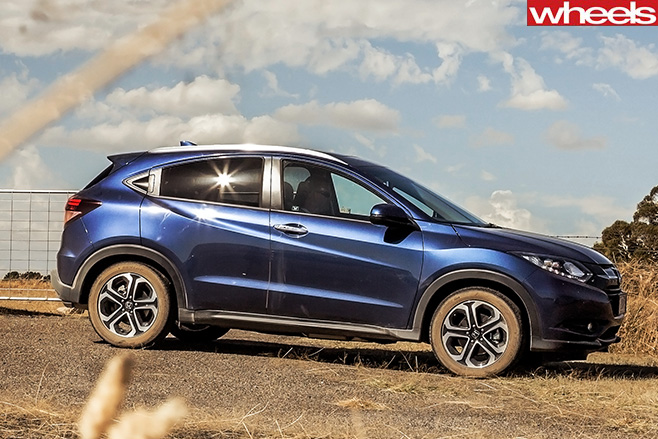
Tall oil
AT PRESENT, the only diesel-engined variants among Australia’s burgeoning baby SUV brigade belong to the Mazda CX-3 (auto-only, front- or all-wheel drive), Peugeot 2008 (manual-only, front-drive) and Skoda Yeti (dual-clutch, all-wheel drive), though more are coming. The one we’re super-keen to drive is Honda’s HR-V diesel. Sharing its strong 88kW/300Nm 1.6-litre turbo-diesel with the Civic, the HR-V oiler will also bring with it a manual. We reckon it’ll be the HR-V to have when it lobs around Christmas.
SUV over MPV
Small-SUV sales have jumped almost 35 percent this year, on the back of a 16 percent rise in 2014, and the imminent Jeep Renegade, Peugeot 2008 update and quirky Citroen C4 Cactus (January 2016) can only add fuel to that fire. The casualty, of course, is the small MPV, whose popularity is waning in Europe and has dropped like a stone in Australia, despite being a more logical option for space-challenged families. Unfortunately for the baby MPV, the masses think they’re about as sexy as an orthopaedic sandal, though some find functional utility quite arousing.
Why no Pug?
Having won our January 2014 small-SUV comparo by a whisker, we chose not to invite Peugeot’s likeable 2008, simply because the game has moved on. And its decrepit automatic drivetrain hasn’t. But good news is on the way. Late this year, the 2008 range (and the 208 hatch) will be transformed when PSA’s brilliant 1.2-litre three-cylinder turbo migrates from the 308 in an 82kW/205Nm tune, tied to a new-generation six-speed automatic, and hopefully a manual. Unless you’re happy with the current 60kW 1.2 atmo five-speeder, which is a leisurely charmer, we’d hold off until the turbo-triple and new auto arrive.
Verdict
 HOLDEN TRAX LTZ 1.4T
HOLDEN TRAX LTZ 1.4T
Price as tested: 30,540 *Includes metallic paint ($550)
NCAP rating: 5 stars (Aus)
Fuel economy: 11.1L /100km (test average)
Acceleration: 0-100km/h: 9.3sec (tested)
Plus: Engaging handling, steering and grip; roomy cabin; strong engine; vision
Minus: El-cheapo trim; refinement issues; rapidly ageing look; steep price
Verdict: 6.0/10
 HONDA HR-V VTi-L
HONDA HR-V VTi-L
Price as tested: $33,139*Includes floor mats ($149)
NCAP rating: not tested
Fuel economy: 9.9L/100km (test average)
Acceleration: 0-100km/h: 10.2sec (tested)
Plus: Excellent interior; brilliant flexibility; space; vision; styling; build quality
Minus: Horrible rear parcel ‘shelf’; flat front seats; artificial steering
Verdict: 8.0/10
 MAZDA CX-3 sTOURING
MAZDA CX-3 sTOURING
Price as tested: $28,990
NCAP rating: not tested
Fuel economy: 9.3L/100km (test average)
Acceleration: 0-100km/h: 8.9sec (tested)
Plus: Superb seat comfort; good ride; keen chassis; grunt; style; value; resale
Minus: Steering kickback; engine vibes; vinyl upholstery; small boot
Verdict: 8.0/10
 RENAULT CAPTUR
RENAULT CAPTUR
Price as tested: $29,090 * Includes metallic paint ($800) and removable charcoal/orange seat trim ($300)
NCAP rating: 5 stars (Euro)
Fuel economy: 8.8L/100km (test average)
Acceleration: 0-100km/h: 11.1sec (tested)
Plus: Smooth and supple; neat packaging; styling; efficiency; utility; refinement
Minus: Gearbox lethargy; hard plastics; no rear-seat curtain airbags
Verdict: 7.0/10
 SUZUKI S-Cross GLX
SUZUKI S-Cross GLX
Price as tested: $30,465 *Includes premium paint ($475)
NCAP rating: 5 stars (Aus)
Fuel economy: 9.0L/100km (test average)
Acceleration: 0-100km/h: 10.5sec (tested)
Plus: Fuel and space efficiency; mildy entertaining chassis; great vision
Minus: Flawed CVT; sticky steering; plain interior; doesn’t look or feel special
Verdict: 5.0/10

